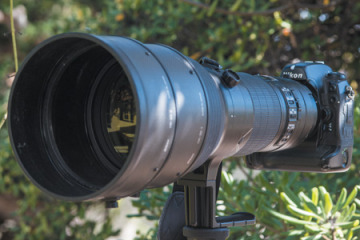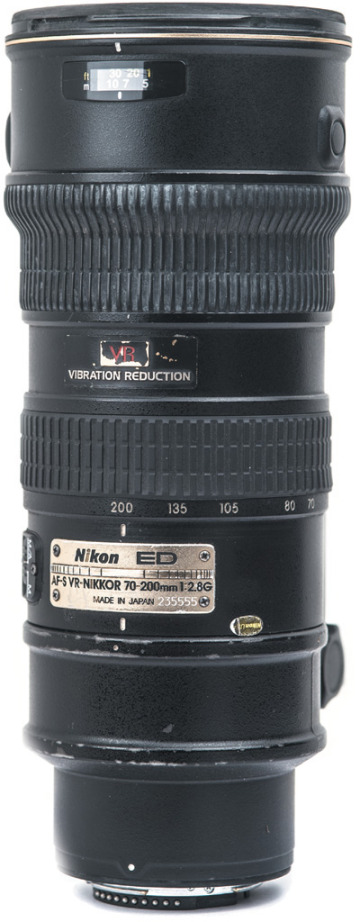8. Investment
By now, you’re a few pages into this book, you have read about several different types of Nikon lenses, and learned some essential information about them. And you understand the issues that position certain lenses at different price points. Lenses are more of an investment than the cameras with which they are used. I have lenses that are 15 years old that still work perfectly, but I have replaced my camera many times during that same period. When you buy lenses, you are investing in the future of your photography. Lenses can vary greatly in price, making the buying decision a tough one.
To understand why some lenses are more affordable than others, let’s look at the factors that determine price: quality of glass, construction quality, maximum aperture, focal length, and Vibration Reduction.
Quality and Quantity of Glass
All Nikon lenses are made with a level of precision that results from many design, engineering, and performance-testing hours. Nikon is currently the only company in the world that manufactures its lenses from the actual glass all the way to the final product. The Nikkor lenses are each a work of art, blending modern technology with traditional craftsmanship. These lenses are not only meant to produce the sharpest images in every instance but are also styled to create a product you will cherish.
Keep in mind, the bigger the lens, the more glass that is needed and the higher the price. The amount of glass is determined by the focal length and the maximum aperture of the lens. The size of the aperture is a mathematical equation based on focal length, so the wider the maximum aperture, the bigger the lens elements and the more glass that is needed in the construction. There is a reason that the AF-S Nikkor 400mm f/2.8G ED is so expensive; it is a huge lens (Figure 1.16).

Figure 1.16 The AF-S Nikkor 400mm f/2.8G ED is a huge lens with really large glass elements, making it a very expensive lens.
Construction Quality
Every Nikon lens is built to exacting specifications, but that does not mean that all the lenses are built the same. Some lenses are aimed at the professional photographer, and some are aimed at the hobbyist. You can usually tell which is which just by the feel and weight of the lens. The lenses made for the consumer market tend to be smaller and lighter, and are not meant to take the same type of abuse that professional photographers’ lenses do. The lenses aimed at the professional market tend to have better builds to help protect the expensive internals from the elements. These are lenses meant to stand up to the harshest climates. I have been using the same AF-S Nikkor 70–200mm f/2.8G ED lens for years, and it has performed flawlessly even though the exterior looks a little banged up (Figure 1.17).

Figure 1.17 The workhorse AF-S Nikkor 70–200mm f/2.8G ED is a lens that can stand up to harsh environments and still produce great images. Even as the paint chips a little and the lens shows some wear and tear, it still functions perfectly.
Maximum Aperture
As a general rule, the lenses that have a constant maximum aperture of f/2.8 or wider have a higher-end build quality. They also have a much higher price point.
Let’s look at two lenses, the AF-S Nikkor 70–200mm f/2.8G ED VR II and the AF-S Nikkor 70–200mm f/4G ED VR. Both of these lenses cover the same focal-length range and both maintain a constant maximum aperture over that range. The only real difference is in the maximum aperture of each lens, with one lens being a stop faster than the other. There is also a slight difference in the VR technology, with the faster lens having an updated version of the Vibration Reduction technology. The real difference in these two lenses is the price—the f/2.8 version is currently US$1,000 more than the f/4 version.
The maximum aperture opening is a point on which many people base lens purchases, but it is important to consider your own applications for different lenses. For example, Nikon makes an AF-S Nikkor 16–35mm f/4G ED VR, which is considered to be a fantastic ultra-wide zoom, great for everything from landscape to editorial photography. However, if you are primarily a landscape photographer, where f/4 might not be used as much as more closed-down apertures, you might consider the AF-S Nikkor 16–85mm f/3.5–5.6G ED VR. It is still a high-quality lens, but with f/3.5–5.6 as its maximum aperture opening, it contains less glass and is US$500 less.
Vibration Reduction
Another technology that increases the price of certain lenses is Vibration Reduction, discussed later in the book. For those with unsteady hands or who work in low-light environments, this price difference may be worth it. It is technology that only gets better as it advances, and the Vibration Reduction available on some lenses currently offers up to four stops of stability. VR increases the size and weight of the lens due to the internal mechanism that controls the technology, so take that into consideration when adding to your lens kit.
As with most tech products, today’s innovations in professional-grade equipment tend to transfer to consumer-level gear over time. Vibration reduction is a great example of trickle-down technology. It is now used in many of the lenses in the Nikon line, including many of the DX lenses. Fortunately, no matter what your budget, you are more than likely able to enjoy some of the largest innovations in lens construction and operation of all time in Nikon lenses, at all price points.
Buying New, Buying Used
Lenses are long-term investments when it comes to acquiring photography gear. Therefore, many folks (including myself) deliberate quite a bit over purchasing glass. One of the burning questions is whether one should purchase new or used.
There are several advantages that come along with buying new, all of which are similar to purchasing any new technology. New lenses offer up the latest and greatest technology to aid the photographer in the image-making process. Buying new from a reputable retailer usually means you get a warranty for the gear (go ahead and register your newly purchased gear at https://support.nikonusa.com/app/product_registration).
Like insurance, the warranty is for those “you never know” moments. However, unlike extensive insurance, warranties typically do not cover all types of damage to newly purchased lenses, so be sure to read the fine print. Buying new also means you can assume you are obtaining a pristine copy of the lens, free of defects, and if it isn’t, the warranty comes in handy.
Finally, new and recent versions of lenses also come with support from Nikon and Nikon Professional Services (NPS). For the most part, Nikon Professional Services is available for those who make a living using Nikon photography gear, including professional-grade lenses.
The drawback to buying new glass, however, is the expense. The primary reason to buy used is simply to save money. I have nothing against buying used glass. In fact, half the lenses in my kit were purchased used. However, there are a few things to consider before plunking down money for used glass. First, make sure you are shopping from a reputable vendor (some of which might even offer a warranty for used gear). I am a fan of B&H Photo (www.bhphotovideo.com) and Adorama (www.adorama.com), both of which have great used departments with many options from which to shop. In the business for many years, KEH (www.keh.com) is another resource. Also consider photography rental businesses, such as LensRentals.com. I have purchased used lenses from them and would not think twice about doing it again. They have great customer service, and both lenses I purchased were in exquisite shape when shipped to me.
This brings me to the second point to consider when buying used: lens condition. All of the above vendors thoroughly check the equipment they intend to sell before it is put on the market, and each of them has a very similar condition rating for their products. When shopping for used gear online, be sure to consult the descriptions for each value used to rate lens conditions, and if you have any questions, contact the seller.
I prefer to buy used lenses that have no scratches on the front or rear elements and show little to no sign of wear on the barrel. Scratches on the lens elements may not show up when the aperture is set to wide open, but they may begin to appear the more you stop down the aperture to achieve greater depth of field. Although wear on the lens barrels may not matter too much to some, it might indicate some internal wear as well, as a result of being knocked around or dropped. I also want lenses on which all of the rings (zoom and focus) operate appropriately and the autofocus and Vibration Reduction (if included) work well.
If you are purchasing from a local colleague or a friend, check for those issues mentioned above, but also spend some time with the lens(es). Ask to handle and possibly field test the glass before making a purchasing decision. Used lenses (and used camera gear in general) are much like used cars. Some have more mileage than others, some do not have as many or the newest features as others, and normal wear and tear needs to be taken into consideration. Overall, though, doing your research and smart shopping will most likely land you great versions of the lenses you want without paying for new.
Renting
Renting camera gear, especially lenses, is a relatively new opportunity for folks to get their hands on all types of equipment. Two reasons for which you might consider renting a lens: needing it for a one-time-only shoot or photographic experience and testing a lens you are considering purchasing. I do not have much need for an AF-S Nikkor 85mm f/1.4G, but occasionally I will rent one for a few days for a fraction of the price it costs to purchase a new or used version.
If you are comfortable with the lens kit you have for your Nikon DSLR, but occasionally want to shoot with another perspective, renting is a great alternative. It is even a smart alternative to borrowing a friend or colleague’s lens because most rental services offer insurance in case of an accident. If you scratch the front lens element of your buddy’s new AF-S DX Nikkor 18–300mm f/3.5–5.6G ED VR lens, you might be obligated to replace it for much more than the nominal insurance fee.
If you are thinking about buying a new or used lens, especially one of the more expensive lenses, consider renting it first for a few days. Use it extensively during the time you have it, putting it through its paces with your shooting style. This trial period will hopefully inform your purchasing decision. Remember that 85mm I was just talking about? After renting one, I didn’t buy it. However, after trialing an AF-S Nikkor 50mm f/1.4G, I was convinced that it belonged in my bag, resulting in a visit to my local camera store.
So, where do you go to rent lenses? Check locally for any camera shops that rent. Many smaller shops are adding rentals to diversify their business, and with renting locally comes a level of support that few non-local entities can achieve. There are also several great online rental services, such as LensRentals.com, LensProToGo (www.lensprotogo.com), and BorrowLenses (www.borrowlenses.com). I have been a LensRentals.com user for years (several of the images in this book were made with gear I rented specifically for it). Online rental services usually offer more gear and also make it easy for the renter to return lenses back to headquarters.